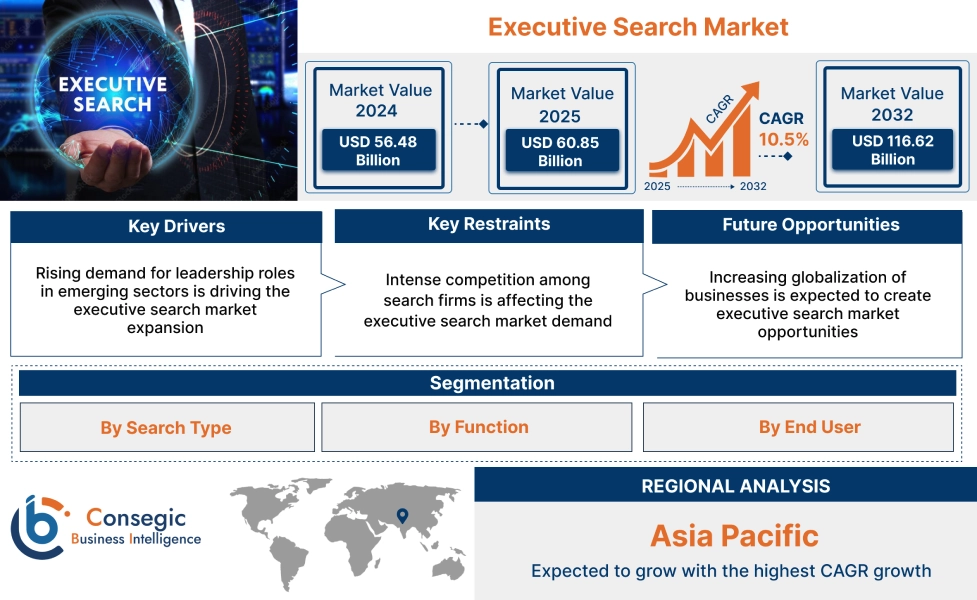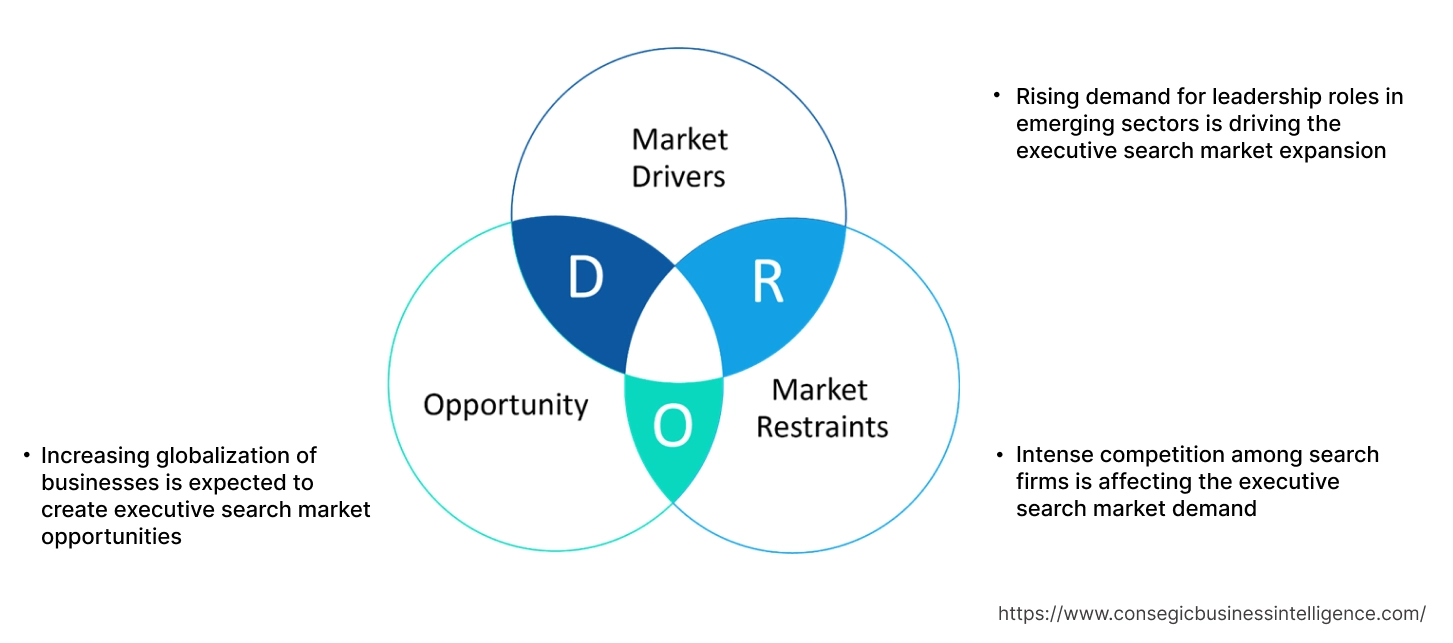Executive Search Market Size:
Executive Search Market Size is estimated to reach over USD 116.62 Billion by 2032 from a value of USD 56.48 Billion in 2024 and is projected to grow by USD 60.85 Billion in 2025, growing at a CAGR of 10.5% from 2025 to 2032.
Executive Search Market Scope & Overview:
Executive search, known as headhunting, refers to the specialized recruitment process of finding, attracting, and hiring top-tier professionals for senior-level positions within an organization. This involves identifying and approaching candidates who are not actively seeking new prospects, making it a strategic and targeted approach. These search firms are typically retained by companies to assist with this process, offering a more specialized and often confidential approach as compared to traditional recruitment methods.
How is AI Transforming the Executive Search Market?
Artificial Intelligence is transforming the executive search market by streamlining candidate sourcing, evaluation, and hiring decisions. Through advanced data analytics, AI scans vast professional databases to identify top talent that aligns with specific leadership roles and organizational goals. Machine learning algorithms assess candidate's skills, experience, and cultural fit more accurately than traditional methods. AI also reduces unconscious bias by focusing on objective performance data rather than subjective factors. Predictive analytics help forecast candidate success and retention potential, improving hiring outcomes. Additionally, AI automates repetitive tasks like resume screening and interview scheduling, enabling recruiters to focus on relationship building. As a result, AI is making executive search faster, fairer, and more strategic for global organizations.
Executive Search Market Dynamics - (DRO) :
Key Drivers:
Rising demand for leadership roles in emerging sectors is driving the executive search market expansion
As developing economies continue to expand, there is an increased need for seasoned executives who can navigate regional complexities and drive growth. This need is particularly prevalent in industries experiencing rapid technological advancements or regulatory changes, such as healthcare and technology. Additionally, headhunting firms are increasingly leveraging technology to streamline operations and enhance the precision of their recruitment processes. Tools such as artificial intelligence and big data analytics are being utilized to improve candidate sourcing and match-making, thereby improving the overall efficiency and success rate of executive placements.
- For instance, according to Intaso, in the cybersecurity recruitment sector, executive search has become more critical due to the industry’s unique challenges and requirements. These executives need a strong knowledge of both technical complexities and key strategic vision. Essentially, the executive search process in this field is about pinpointing candidates who are not just technically skilled but are also strategic thinkers capable of navigating the unique and intense pressures of the cybersecurity sector.
Thus, according to the executive search market analysis, the rising need for leadership roles in emerging sectors is driving the executive search market size.
Key Restraints:
Intense competition among search firms is affecting the executive search market demand
As more firms enter the market, differentiation becomes critical, and search firms must invest in developing unique value propositions and enhancing their service delivery capabilities. Additionally, the reliance on traditional recruitment models and processes can be a barrier to innovation and efficiency.
Further, firms struggle to differentiate themselves and demonstrate a unique value proposition beyond simply finding candidates. Clients can be overwhelmed by the sharp number of options, often leading them to choose firms with the most visible marketing or improved sales tactics, rather than the best fit for their specific needs. Thus, the aforementioned factors would further impact the executive search market size.
Future Opportunities :
Increasing globalization of businesses is expected to create executive search market opportunities
As companies expand their operations internationally, the need for executives who can lead cross-cultural teams and navigate diverse regulatory environments is growing. Executive firms have the advantage of leveraging their global networks and expertise to source candidates with the necessary skills and experience to drive international development. Furthermore, the rise of remote work and digital collaboration tools is enabling search firms to tap into global talent pools and offer more flexible recruitment solutions. This globalization trend is opening new prospects for growth and innovation in the executive search market.
- For instance, around 80% of workers used collaboration tools in 2021. As organizations increasingly adopt long-term hybrid work arrangements, cloud-based technologies for individual and team productivity, along with collaboration tools, will be central to creating new work hubs. These hubs will cater to the diverse needs of employees working remotely, in the office, or a combination of both. With the increasing trend of work from home and globalization, these factors would further drive the executive search market in the coming years.
Thus, based on the above executive search market analysis, the increasing globalization of businesses is expected to drive the executive search market opportunities during the forecast period.
Executive Search Market Segmental Analysis :
By Search Type:
Based on search type, the market is segmented into retained, contingency, and hybrid.
Trends in the search type:
- Executive firms are increasingly leveraging technology to streamline operations and enhance the precision of their recruitment processes. Tools such as artificial intelligence and big data analytics are being utilized to improve candidate sourcing and match-making, thereby improving the overall efficiency and success rate of executive placements.
- Consequently, many companies are working closely with search firms to ensure that their recruitment processes are aligned with diversity goals. This shift is prompting headhunting firms to broaden their networks and develop methodologies that prioritize diverse candidate pools.
- Thus, the above factors are driving the executive search market demand.
The retained segment accounted for the largest revenue share of 44.28% in the year 2024.
- Retained search is the traditional and most comprehensive form of executive recruitment. This service type is characterized by its exclusivity and depth of engagement, where search firms are retained on an exclusive basis to fill specific executive roles.
- Firms that opt for retained searches seek high-level executives whose strategic influence is pivotal to organizational success.
- The thoroughness of this approach, which includes rigorous candidate assessment and consultancy services, supports its ongoing need despite its premium cost.
- For instance, Cochran & Yale is offering retained search for professional recruitment services. The company’s experienced recruiters utilize AI (artificial intelligence) and analytics tools to identify the best candidate group. In partnership with TalentFuel, the company provides a clear and detailed overview of each candidate.
- Thus, based on the above analysis, these factors are further driving the executive search market growth.
The contingency segment is anticipated to register the fastest CAGR during the forecast period.
- Contingency search operates on a no-win, no-fee basis, making it an attractive option for organizations intending to fill multiple roles or less senior positions.
- The lower financial risk associated with contingency search appeals to cost-conscious firms, particularly in sectors facing budgetary constraints.
- The role of technology in enhancing contingency search processes is gaining prominence, with firms increasingly utilizing digital platforms and databases to fast-track candidate identification and engagement.
- Thus, based on the above analysis, these factors are expected to drive the executive search market share during the forecast period.
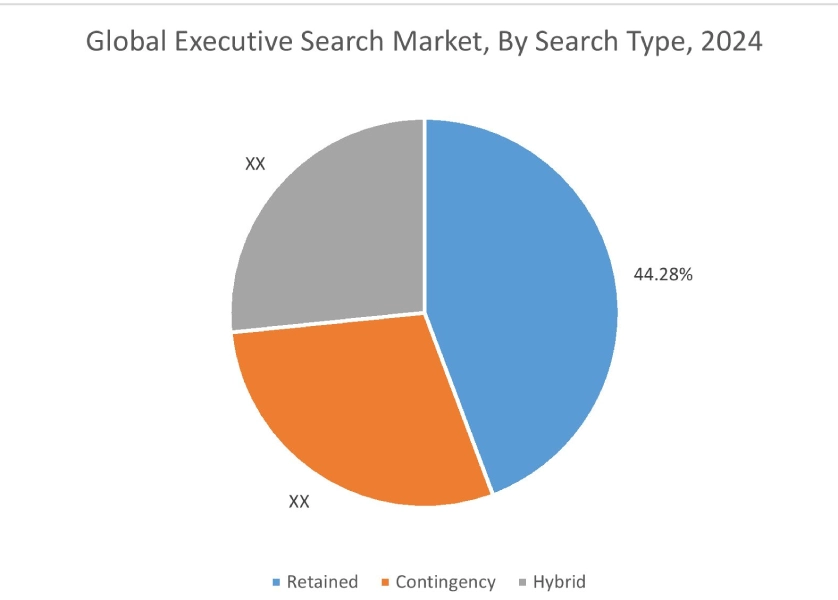
By Function:
Based on the function, the market is segmented into C-suite, director level and above, and specialized functional roles.
Trends in the function:
- Interim management services are witnessing a surge in demand as organizations seek agile solutions to navigate transitional periods or address immediate leadership needs.
- The increasing acceptance of interim roles as strategic positions rather than mere placeholders is expanding the service's appeal. Moreover, interim managers are often seen as change agents, bringing fresh perspectives and expertise to drive specific projects or organizational transformations.
- These factors would further supplement the executive search marketgrowth and trends.
The director level and above segment accounted for the largest revenue share in the year 2024.
- Artificial intelligence (AI) and advanced data analytics are increasingly being used to streamline the identification and evaluation of director-level candidates.
- AI-powered tools can automate resume screening, identify passive candidates, and predict cultural fit, in turn enhancing efficiency and accuracy.
- The acceptance of remote work has led to the widespread use of virtual and hybrid interview formats for director-level hiring. This expands the geographical reach for talent acquisition and necessitates the ability to effectively assess candidates in virtual environments.
- Organizations recognize that diverse leadership teams lead to better innovation and decision-making. Search firms are actively focusing on identifying and presenting candidates from underrepresented backgrounds for director-level roles.
- Thus, based on the above analysis, these factors would further supplement the executive search market
The C-suite segment is anticipated to register the fastest CAGR during the forecast period.
- There is a growing expectation for headhunting firms to present diverse candidate options that reflect a broader range of backgrounds, experiences, and perspectives. This includes gender, race, ethnicity, and other dimensions of diversity.
- Companies are looking for C-level executives who have a proven commitment to fostering inclusive work environments and driving diversity, equity, inclusion, and belonging (DEIB) initiatives within their organizations.
- With the rise of remote work and increasingly globalized businesses, companies are more open to considering C-level candidates from anywhere in the world.
- For instance, the 2024 recruitment & employment confederation (REC) survey revealed that a significant majority (75%) of companies in the UK prefer to partner with executive search firms for their C-suite hiring needs, citing the systematic and strategic nature of their methods.
- These factors are anticipated to further drive the executive searchmarket trends and growth during the forecast period.
By End User:
Based on end user, the market is segmented into corporate sector, non-profit organization, government and public sector, and other end users.
Trends in the end user:
- As industries undergo digital transformation and seek to enhance sustainability, the demand for forward-thinking executives who can lead these initiatives is expected to grow.
- The increasing focus on cybersecurity and data privacy is creating demand for executives with expertise in these areas, presenting further prospects for market development and trends.
The corporate sector segment accounted for the largest revenue share in the year 2024, and it is expected to register the highest CAGR during the forecast period.
- Large enterprises often prioritize leaders who can uphold and enhance established corporate cultures, fostering employee engagement and loyalty.
- The corporate sector focuses on leaders who can shape and define organizational culture, promoting agility and adaptability. Headhunting firms must consider these cultural dynamics when sourcing and evaluating candidates, ensuring alignment with the organization's values and long-term goals.
- The ability to identify leaders who can drive cultural transformation and enhance organizational efficiency is a key differentiator for search firms.
- The above factors are anticipated to drive the executive search market trends and growth during the forecast period.
Regional Analysis:
The global market has been classified by region into North America, Europe, Asia-Pacific, Middle East & Africa (MEA), and Latin America.
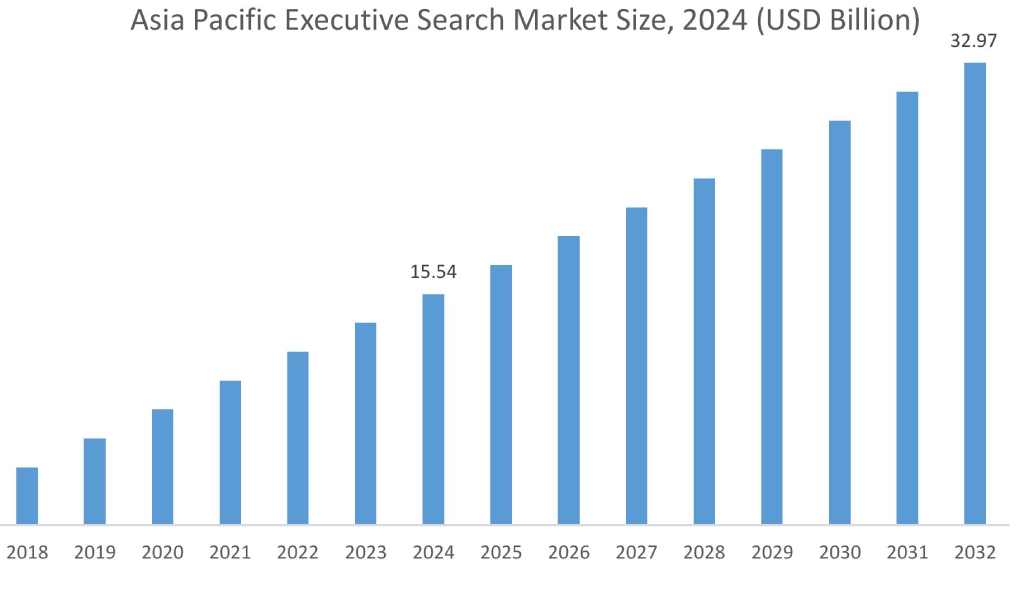
Asia Pacific executive search market expansion is estimated to reach over USD 32.97 billion by 2032 from a value of USD 15.54 billion in 2024 and is projected to grow by USD 16.79 billion in 2025. Out of this, the China market accounted for the maximum revenue split of 32.40%. The rapid industrialization and economic development in countries such as China, India, and Southeast Asia are creating new prospects for executive recruitment. As businesses expand and seek to penetrate new markets, there is a growing need for executives who can navigate regional complexities and drive development. Additionally, the increasing focus on digital transformation and technology adoption in the region is fueling the need for leaders with expertise in these areas. Further, the development of local talent pools and the rise of technology firms are contributing to the regional market development. These factors would further drive the regional executive search market during the forecast period.
- For instance, Egon Zehnder's India team assists organizations in tackling crucial leadership issues. Their expertise lies in various areas, such as finding top-level executives, planning for CEO transitions, advising boards of directors, supporting family-run businesses, and fostering the development of current and future leaders.
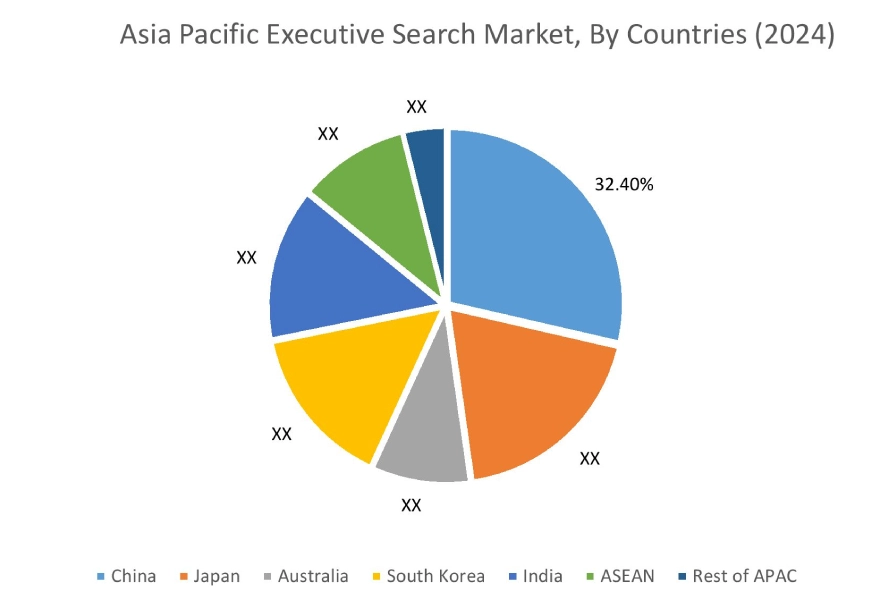
North America market is estimated to reach over USD 42.30 billion by 2032 from a value of USD 20.59 billion in 2024 and is projected to grow by USD 22.18 billion in 2025. North America holds a substantial share in the global market, driven by the concentration of multinational corporations and the presence of a mature business ecosystem. The United States is a key contributor to this growth, as companies across diverse sectors invest in securing top-tier executive talent to maintain competitive advantages. Further, the emphasis on innovation and strategic leadership in the region continues to drive demand for specialized headhunting services, further supported by the region's strong technological infrastructure and access to a skilled workforce. These factors would further drive the market in North America.
- For instance, according to the American Staffing Association, the staffing sector in the U.S. provided approximately 13 million individuals with job and career opportunities in 2023. Throughout that year, American staffing firms hired 12.7 million temporary and contract workers.
According to the analysis, the executive search industry in Europe is anticipated to witness significant development during the forecast period. The emphasis on sustainability and innovation in Europe is driving the need for leaders who can guide organizations through transitions towards greener business models and digital solutions. Moreover, the European Union's commitment to enhancing diversity and inclusion in leadership roles is creating prospects for executive search firms to support organizations in achieving these objectives.
With the ever-evolving business landscape, companies in Latin America are striving to stay ahead by employing individuals who can drive innovation and strategic growth. This has intensified the need for headhunting services, which specialize in identifying and recruiting individuals who possess niche skills and expertise. Further, the Middle East & Africa region's commitment to sustainability and the transition to green economies are creating prospects for head-hunting firms to source talent with expertise in environmental and renewable sectors. Further, the regional market is expected to grow at a steady pace, supported by the region's economic stability and strategic investments in human capital development.
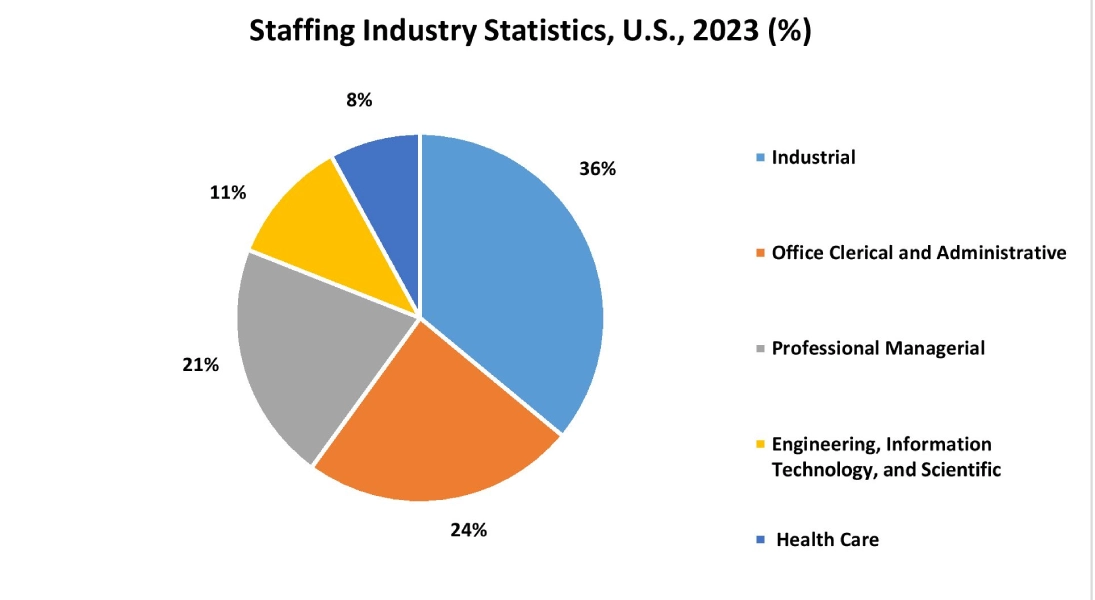
Top Key Players and Market Share Insights:
The global executive search market is highly competitive, with major players providing solutions and services to the national and international markets. Key players are adopting several strategies in research and development (R&D), product innovation, and end-user launches to hold a strong position in the market. Key players in the executive search industry include-
- Boyden Global Executive Search (U.S.)
- Egon Zehnder International AG (Switzerland)
- Russell Reynolds Associates, Inc. (U.S.)
- Signium International (U.S.)
- Spencer Stuart & Associates, Inc. (U.S.)
- Korn Ferry International (U.S.)
- Heidrick & Struggles International, Inc. (U.S.)
- AlixPartners, LLP (U.S.)
- Mercer LLC (U.S.)
- Odgers Berndtson Ltd. (U.K.)
Recent Industry Developments :
Expansion:
- In September 2024, Boyden expanded its presence in Latin America by opening a new office in Mexico. This development is headed by Farid Alcázar and David Martínez, who are experienced executive professionals with a total of 25 years working internationally. Their expertise will help Boyden better serve companies aiming to expand within Latin America or enter the Americas market.
Executive Search Market Report Insights:
| Report Attributes | Report Details |
| Study Timeline | 2019-2032 |
| Market Size in 2032 | USD 116.62 Billion |
| CAGR (2025-2032) | 10.5% |
| By Search Type |
|
| By Function |
|
| By End User |
|
| By Region |
|
| Key Players |
|
| North America | U.S. Canada Mexico |
| Europe | U.K. Germany France Spain Italy Russia Benelux Rest of Europe |
| APAC | China South Korea Japan India Australia ASEAN Rest of Asia-Pacific |
| Middle East and Africa | GCC Turkey South Africa Rest of MEA |
| LATAM | Brazil Argentina Chile Rest of LATAM |
| Report Coverage |
|
Key Questions Answered in the Report
How big is the Executive Search Market? +
Executive Search market size is estimated to reach over USD 116.62 Billion by 2032 from a value of USD 56.48 Billion in 2024 and is projected to grow by USD 60.85 Billion in 2025, growing at a CAGR of 10.5% from 2025 to 2032.
Which is the fastest-growing region in the Executive Search Market? +
Asia-Pacific region is experiencing the most rapid growth in the market.
What specific segmentation details are covered in the Executive Search report? +
The executive search report includes specific segmentation details for search type, function, end user, and region.
Who are the major players in the Executive Search Market? +
The key participants in the market are Boyden Global Executive Search (U.S.), Egon Zehnder International AG (Switzerland), Korn Ferry International (U.S.), Heidrick & Struggles International, Inc. (U.S.), AlixPartners, LLP (U.S.), Mercer LLC (U.S.), Odgers Berndtson Ltd. (U.K.), Russell Reynolds Associates, Inc. (U.S.), Signium International (U.S.), Spencer Stuart & Associates, Inc. (U.S.), and others.
